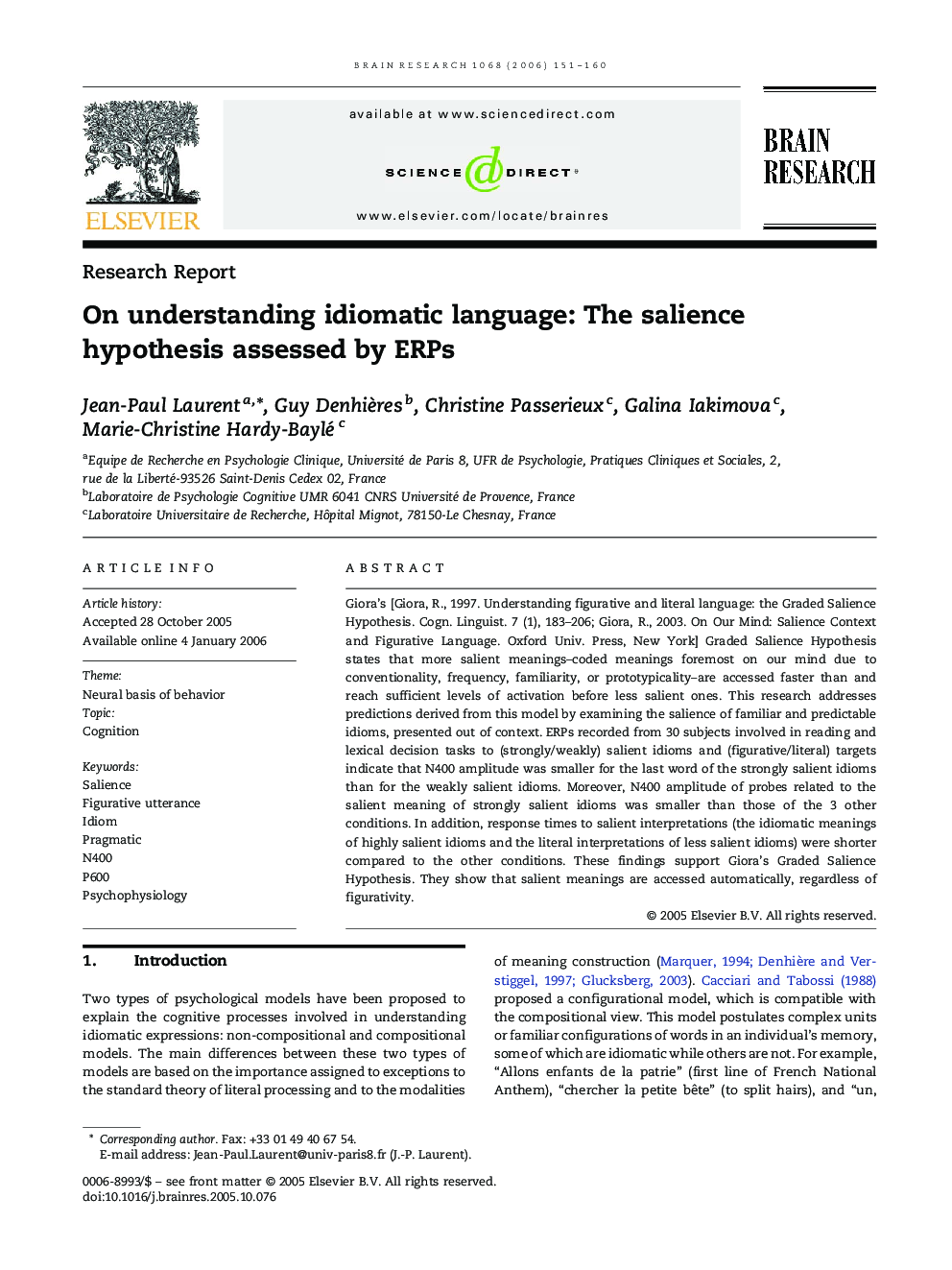| کد مقاله | کد نشریه | سال انتشار | مقاله انگلیسی | نسخه تمام متن |
|---|---|---|---|---|
| 4333535 | 1292934 | 2006 | 10 صفحه PDF | دانلود رایگان |

Giora's [Giora, R., 1997. Understanding figurative and literal language: the Graded Salience Hypothesis. Cogn. Linguist. 7 (1), 183–206; Giora, R., 2003. On Our Mind: Salience Context and Figurative Language. Oxford Univ. Press, New York] Graded Salience Hypothesis states that more salient meanings–coded meanings foremost on our mind due to conventionality, frequency, familiarity, or prototypicality–are accessed faster than and reach sufficient levels of activation before less salient ones. This research addresses predictions derived from this model by examining the salience of familiar and predictable idioms, presented out of context. ERPs recorded from 30 subjects involved in reading and lexical decision tasks to (strongly/weakly) salient idioms and (figurative/literal) targets indicate that N400 amplitude was smaller for the last word of the strongly salient idioms than for the weakly salient idioms. Moreover, N400 amplitude of probes related to the salient meaning of strongly salient idioms was smaller than those of the 3 other conditions. In addition, response times to salient interpretations (the idiomatic meanings of highly salient idioms and the literal interpretations of less salient idioms) were shorter compared to the other conditions. These findings support Giora's Graded Salience Hypothesis. They show that salient meanings are accessed automatically, regardless of figurativity.
Journal: Brain Research - Volume 1068, Issue 1, 12 January 2006, Pages 151–160